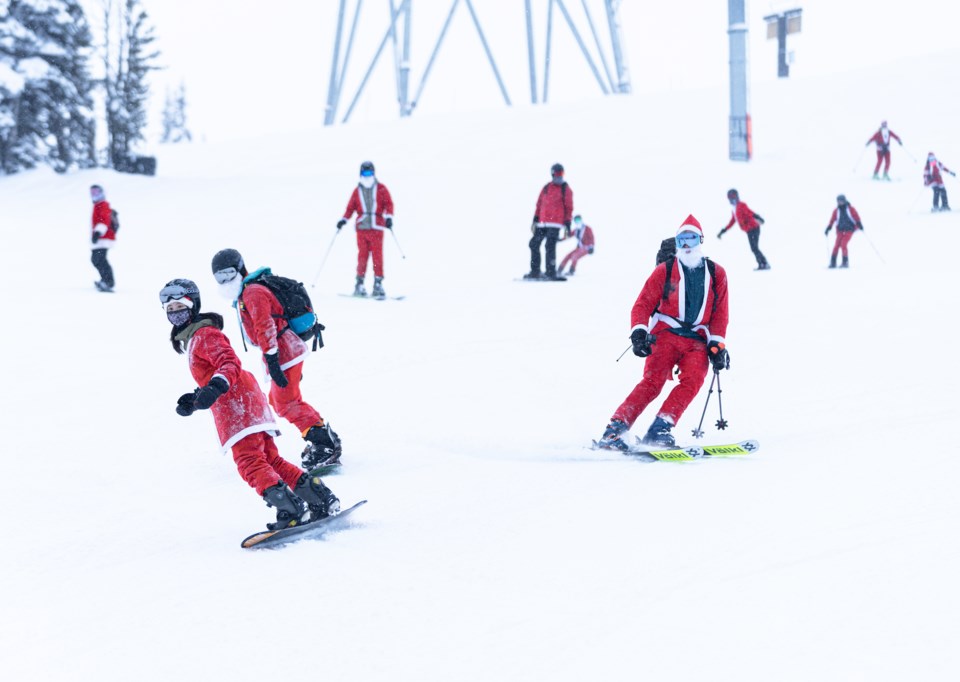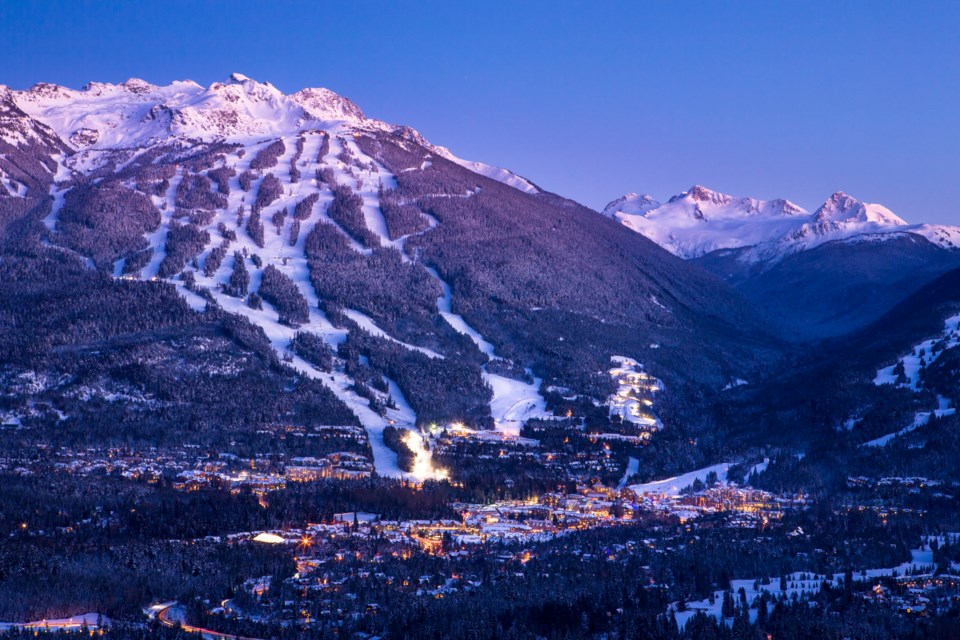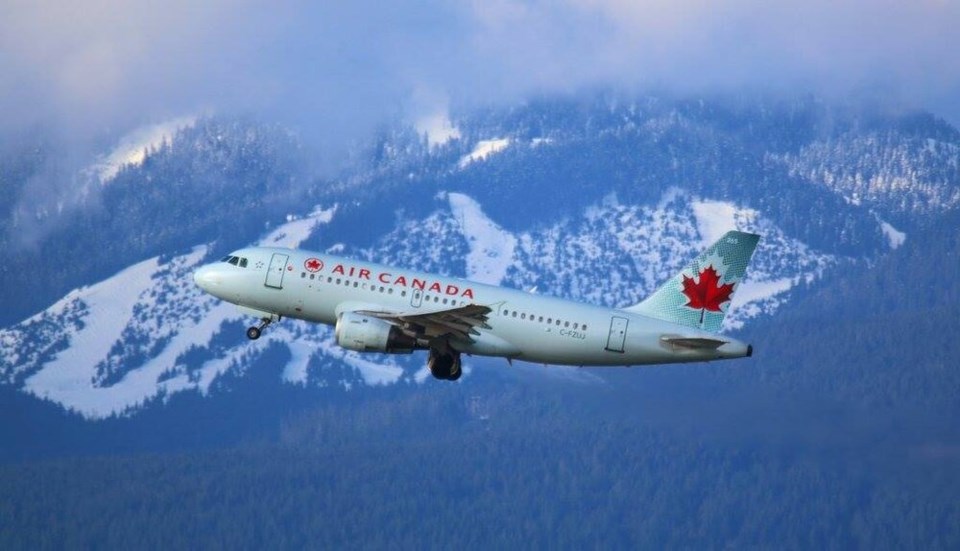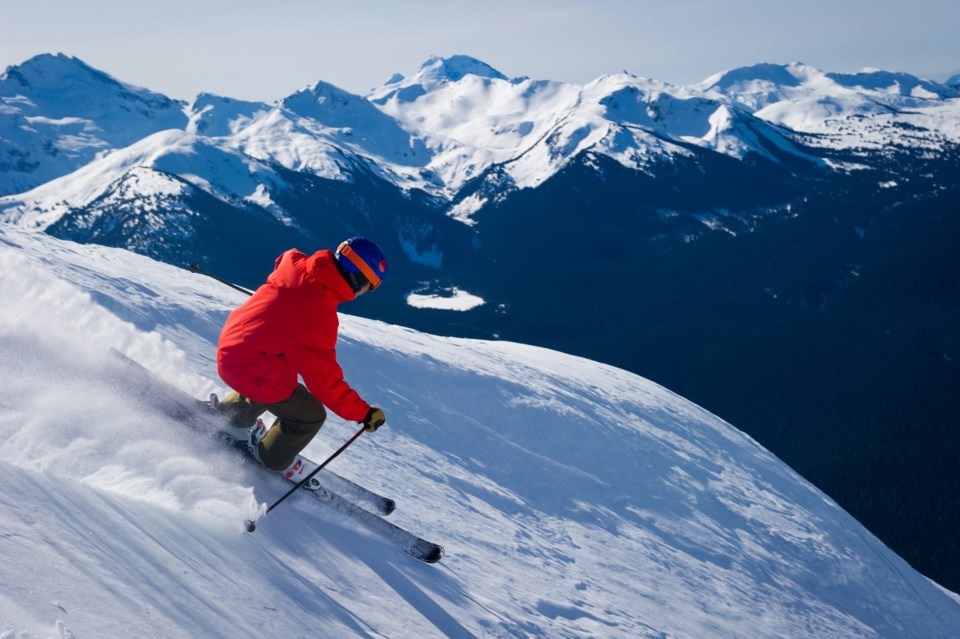This is the second story in a two-part series looking at the impact of climate change on B.C. ski hills. For part one, click here.
By many metrics, the future of the global ski industry looks grim.
A high-carbon future would largely wipe out all 99 ski areas in the American Midwest by late century; across Quebec, Ontario and the northeastern corner of the U.S., only 29 out of 171 ski resorts are projected to survive. Out west, places like California, where water sources to make snow are limited, will get “clobbered” in the same way the European Alps will lose out, calculates Daniel Scott, who studies the intersection of tourism and climate change at the University of Waterloo.
"There are winners and losers with each one," said Scott.
Places like Quebec will be among the winners, says the climate researcher, as ski hills in neighbouring Ontario suffer under the warming effects of the Great Lakes. What will happen in British Columbia? Scott declined to share details of his research on Western North America, which has yet to be published.
But according to Michael Pidwirny, a climate scientist from the University of British Columbia Okanagan, his projections suggest coastal mountains — including Mount Washington, Cypress Bowl, Grouse Mountain, Mount Seymour and Hemlock — will face steep declines in snowfall by mid-century. That will inevitably challenge their very existence as a winter resort, he says.
B.C.’s Interior will face even more warming than coastal regions. But with already cold winters and longer seasons, resorts like Lake Louise and Big White will remain viable well into the future, according to an unpublished study Pidwirny conducted across 12 B.C. ski hills.
As resorts face diminished snowfall, Scott and Pidwirny agree even operators with the deepest annual snowpacks need to start asking themselves how they will adapt.
'WE WILL TAKE MARKET SHARE'
Glacier Media contacted 34 ski resorts in B.C. to understand how operators are planning to adapt to a changing climate and the diminishing snowfall that comes with it.
At Big White outside of Kelowna, management monitors 10-year snowfall averages but is still discussing how it is going to adapt to warmer, wetter winters, according to marketing director Michael J. Ballingall.
“We know we will take market share away from those who don’t have snow. People will keep skiing wherever they can,” he said.
Buried deep in the Rocky Mountains north of Prince George, owner and manager of Powder King Mountain Resort Jim Salisbury says he hasn’t done any official modelling for the mountain. But anecdotally, he says, the resort used to average 20 metres of snow a year; now, it averages just over 12.
“We get the arctic outflows, we get the Pacific influence and you know, we're just blessed here. I mean, a bad year here at Powder King is still a good year,” he said, describing his mountain as a 200-year operation in a fortunate spot. “If we don't get snow, the whole world’s got bigger problems going on.”
SilverStar Mountain Resort’s Ian Jenkins said he is focused on reducing emissions and limiting the resort’s impact on the local environment. It is a message echoed by most of the ski resorts Glacier Media surveyed across B.C.
Another thing they have in common: nearly all the larger ski hills surveyed said they were expanding off-season activities to make up for any future drops in snowfall.
'THINKING WAY OUTSIDE THE BOX'
Only a few kilometres from the U.S. border, the resort at Baldy Mountain climbs out of the southern reaches of the Okanagan Valley. Promoted as a place “Where the world can’t see you, but you can see the world,” Baldy’s lifts reach an altitude of over 2,100 metres, making it among the highest resorts in B.C. But that hasn’t stopped its operators from moving ahead with plans to adapt to any potential drop in snowfall over the coming decades.
Troy Lucas, who helps manage the resort, told Glacier Media the mountain avoids snowmaking and the huge volume of water it uses. Instead, he says they are looking to create an elaborate system of lightweight, movable fences that — properly shaded and insulated — could capture enough snowdrifts to cover the resorts over 55 kilometres of trail.
By design, the resort’s runs sit idle two days a week. Marketed as “Powder Thursdays,” the weekly skiing sabbatical doubles as a built-in safety net for snow accumulation.
“We’re thinking way outside the box,” Lucas said.
Baldy Mountain Resort is also working to become a year-round business, opening up the hill to mountain biking, camping, frisbee golf and even farming. For the first time last year, the mountain opened to summer visitors, turning on lifts and offering hikers access to a wide network of trails; and in July, “Baldy Beach” kicked off, an event bringing people together through horseshoes, a s’mores pit and volleyball.
Despite the plan to diversify, Lucas says the resort has not engaged with any long-term snowfall models for the mountain. And its five-year plan does not account for any drops in snowfall.
CHRISTMAS SEASON AT RISK
Ski hill operators in more secluded parts of the province say expanding summer operations is not possible without more money or better access to tourism.
“I don’t know if we have anything in our toolkit,” said Hildur Sinclair, the second-generation owner-operator of Troll Ski Resort near Quesnel, one of the first bumps on the west side of the Caribou Mountains.
“We don’t make snow. We groom things as low as we can. We mow our hill so we don’t need as much snow… That’s about all we can do.”
Sinclair says she remembers deep freezes when her parents ran the resort. But in the last 20 years, she says winters have warmed, with the lowest temperatures shifting later in the season and impacting peak sales over Christmas.
The holiday season is a make-or-break time of year for ski hills around the world, says Scott. Most resorts do 25 per cent of their business over Christmas and New Year’s Eve. Miss that, and a mountain will have financial problems they will never catch up to for the rest of the season, said the expert on climate change and tourism.
Sinclair’s solution has been to cater to local skiers and snowboarders. That loyal customer base has helped the resort come through shocks like the COVID-19 pandemic relatively unscathed.
Now, she’s in talks with Alpine Canada to move their training from the Coast Range into more consistent climes.
“They are concerned about where they are going to train. They are looking to the Interior,” she said.

B.C.’s MEGA RESORT AT A CROSSROADS
Somewhere between the destinies of B.C.’s coastal and Interior mountains lies Whistler Blackcomb. With three climatic zones and a global brand, it is the biggest and most profitable resort in the province.
Before the COVID-19 pandemic, at least a quarter of B.C.’s foreign tourist dollars were spent at the resort village. In the past, that money has offered a significant source of public dollars, bringing in $1.37 million in tax revenue every day, according to a 2016 economic planning report.
It’s an economic engine built on snow, but one that could soon be sputtering.
By mid-century, the annual average temperature in the Whistler region is projected to warm by about 3 C. Snow will continue to fall at upper elevations, but skiing into the village could become impossible as the annual snowpack drops by up to a metre, according to a report from the University of Victoria's Pacific Climate Impacts Consortium (PCIC).
In what PCIC scientists describe as a “remarkable” confluence of climate change at one location, Whistler will face more heavy rain, milder winters and more summer drought. By the end of the century, Pidwirny projects Whistler Blackcomb’s mean winter temperature could resemble the average climatic conditions at Cypress Mountain Ski Resort between 1971 and 2000.
A spokesperson for Vail Resorts, the ski conglomerate that owns Whistler Blackcomb, said “We’re not preparing for more or less snowfall; we are preparing for more change.”
“That said, across our resorts, we are seeing a higher variability in conditions, especially in the early season,” corporate communications manager Marjory Elwell said in an email. Vail Resorts, added Elwell, is ramping up snowmaking to adapt to a changing climate.

Adapting to a rising snow line has meant building lifts at higher elevations into “future snow zones,” Whistler city councillor Arthur De Jong told Glacier Media.
“We don't build ski areas anymore. We build four-season mountain resorts. The dynamics of tourism have changed,” he said. “People want to be in mountains more to walk, to hike, to simply be in nature.”
Or to mountain bike — Whistler’s 200-kilometre network of trails has become big draw in recent decades, bringing in millions of dollars in the off-season.
Ultimately, conglomerates like Vail Resorts — which has a pass program in place at ski hills across North America, Australia, Canada and Japan — are banking on a membership model where skiers can buy one pass and access multiple resorts should their closest hill suffer a snowless year.
If one season, Whistler is starved of snow, pass holders can simply fly to Colorado, the thinking goes. It’s a proposition some experts say completely ignores the reality of both a changing climate and market realities. Scott expects that over the coming three years, publicly traded ski operators like Vail Resorts will have to disclose the level of risk climate change poses to their businesses.
“The challenge for that is the Whistlers of the world are international destinations. You've got people flying from New York, Austria, Japan,” he said, pointing to the lack of green alternatives in aviation. “There's no technology for that now. There won't be by mid-century and so that's a part of the carbon puzzle.”

Over the course of nearly four decades, De Jong has risen from a teenager working with Blackcomb Ski Patrol to occupy Vail Mountain resort’s role of senior manager of mountain planning and environmental resource management. In that time, he has become a leading voice in the resort’s push to survive a changing climate.
De Jong says the pandemic has offered a hint at what damage could be done should climate change impact international tourism. At one point in 2021, international visitors had dropped to 15 per cent of total visitors, down from nearly half of all visitors in the previous fiscal year.
“We've built an engine here that is of a scale that we need both a strong destination and regional market,” said the Whistler councillor.
But what frightens De Jong most is not the COVID-19 pandemic or even a lack of snow. As he puts it, “it’s not the weather that’s going to take us down” but the geopolitical fallout of climate change as it triggers water and food shortages across the planet.
“That could potentially just make us irrelevant. People won’t be travelling as much,” he said. “We will go as the global economy goes.”
If you missed part one of this series, you can read it here.
Stefan Labbé is a solutions journalist. That means he covers how people are responding to problems linked to climate change — from housing to energy and everything in between. Have a story idea? Get in touch. Email [email protected].



